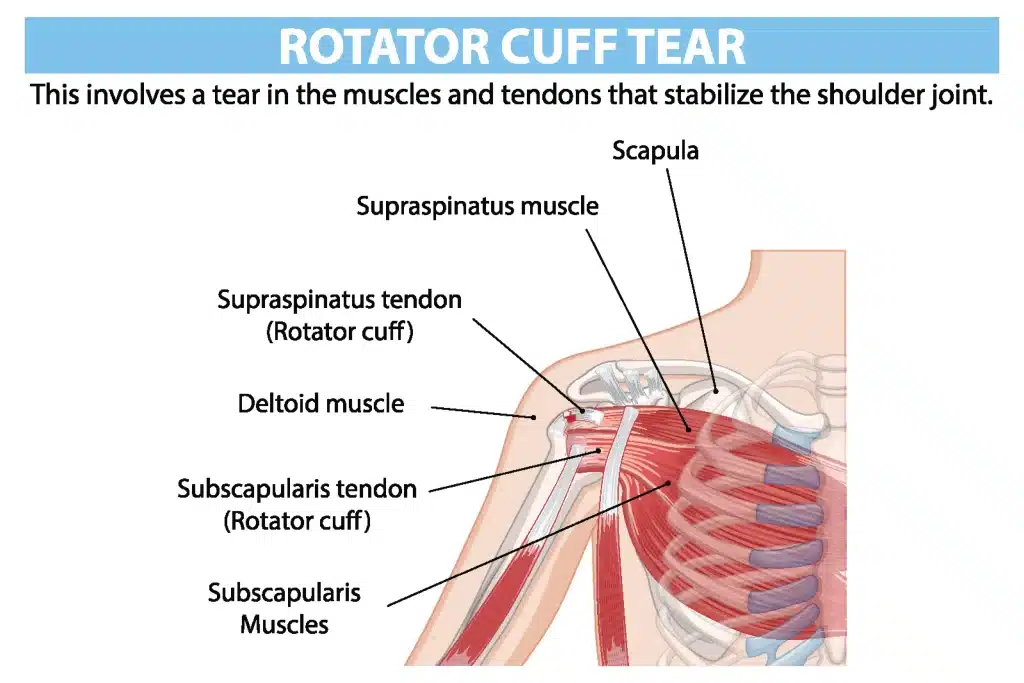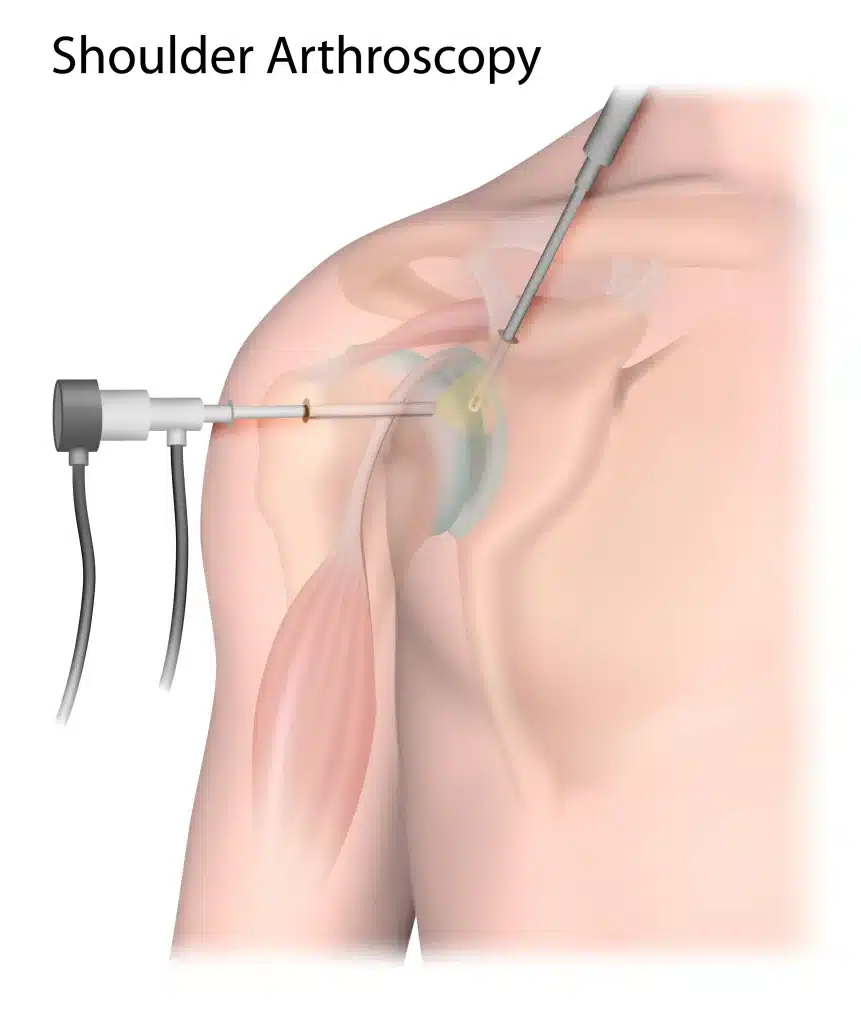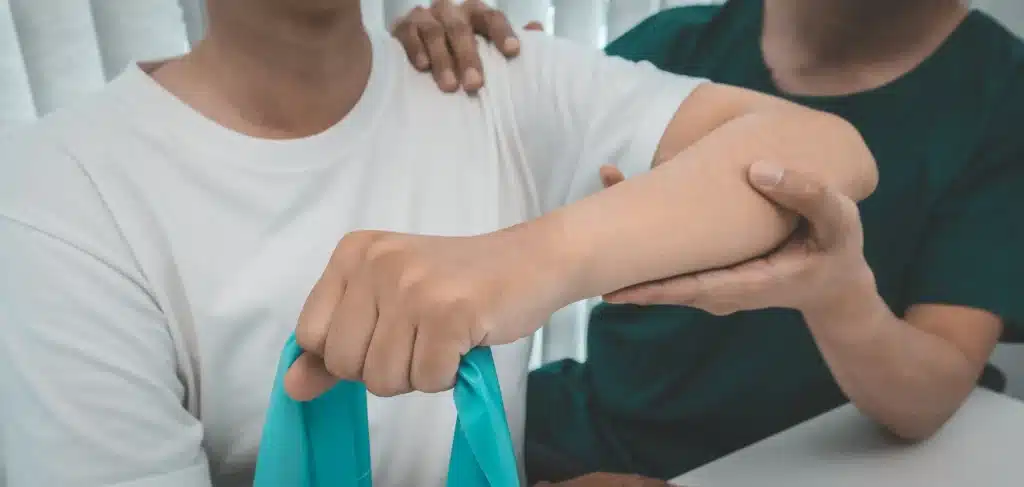Rotator Cuff Surgery Recovery: Stages, Tips, and Timeline
Rotator cuff surgery recovery generally takes a minimum of several months—but for those suffering from a torn rotator cuff, surgical repair can be instrumental in providing needed pain relief and functionality. Knowing what to expect while healing and how to manage pain and regain strength after surgery can help you regain the quality of life you enjoy.
Care for a Torn Rotator Cuff

The rotator cuff is a group of four small shoulder muscles that come together as tendons to cover the head of the humerus (upper arm bone) and help lift and rotate your arm. If you tear your rotator cuff, a tendon will partially or fully separate from the bone, causing symptoms like pain, weakness, and limited movement.
The most common causes of a torn rotator cuff are injury from a fall, heavy lifting, or normal wear and tear caused by repetitive stress. While minor or partial rotator cuff tear treatment may not demand surgery, more severe tears typically require surgical intervention.

Rotator Cuff Surgery
Most rotator cuff repair is performed using arthroscopic shoulder surgery through small incisions. Occasionally, a surgeon may need to use a mini-open or open approach as their rotator cuff repair protocol.
Many procedures are completed in under an hour and require only a nerve block (local anesthetic) and partial sedation rather than general anesthesia. This minimizes pain and also limits potential side effects like nausea and vomiting. You’ll likely be able to go home the same day as your procedure.
Tip: See this page for detailed information regarding preparing for surgery.
What To Expect 2 Weeks After Rotator Cuff Surgery
In the days right after your rotator cuff tear surgery, you will feel tired, and your shoulder, arm, and hand may be swollen. You may be directed to start taking pain medication before your nerve block wears off, which is first noticeable as a pins and needles sensation.
Leave the bandage on until your orthopedic shoulder surgeon okays its removal. Once your bandage comes off, keep your incision clean and dry. If you have strips of tape over your incision, leave them on for a week or until they fall off on their own.
Wear your sling to hold your arm and shoulder in place and help you feel more comfortable. Keep it on at all times (unless you’re showering), but it’s fine to loosen it while sitting or lying down and supporting your arm with a pillow. As you begin to heal, your surgeon will approve sling removal for a couple of hours at a time so you can do exercises that build back strength.
Once you’ve been cleared to shower, take off your sling and let your arm rest alongside your body. Do not lift it to wash under your arm. Instead, lean over and let your arm fall away from your body. It’s safest to do this while on a shower stool at first.
Eat your regular diet after surgery unless it upsets your stomach, in which case you can switch to bland foods like toast, yogurt, plain rice, or broiled chicken. Focus on high-fiber foods for good nutrition after surgery or take supplemental fiber to prevent constipation, as your digestion may be a bit irregular. If you do not have a bowel movement for a couple of days, you may want to ask your surgeon if you can take a mild laxative.
If you have any of the following symptoms, reach out to your medical team immediately:
- Tingling, numbness, or a bluish color in your hand or fingers
- Severe nausea or vomiting
- Pain that doesn’t improve with medication
- Loose stitches or an open incision
- Bleeding that comes through your first bandage or that continues for more than 3 days
- Signs of infection, such as red streaks coming from the incision, pus draining from the incision, an increase in pain, swelling, warmth, or redness, or a fever
- Lack of bowel movement after taking a laxative
Recovery From Rotator Cuff Surgery
Tip: Think of your shoulder surgery recovery as having three phases. The first phase is about protecting your arm, so you won’t use it for anything other than prescribed exercises. The second phase aims to restore everyday movements and range of motion. You will not regain full strength until the third phase, which focuses on functionality.
Prescriptions: Take pain medications after surgery exactly as directed. Most times you will be instructed to take medications at the first sign of pain rather than waiting for symptoms to become severe.
Ice: Apply a wrapped ice pack to your shoulder in 10- to 20-minute increments every 1 to 2 hours to help with pain and swelling.
Sleep: To help protect your shoulder while you sleep, raise your upper body using a few pillows or sleep in a recliner rather than lying flat or sleeping on your side.
Walk: Go for increasingly longer walks each day to help prevent illnesses and constipation. You may not be able to drive for several weeks or until you no longer have to wear your sling.
Physical Therapy and Home Exercises
Tip: Don’t reach your arm away from your body or put weight on your hand, elbow, or shoulder. Remember, you can reinjure your rotator cuff during recovery, so be sure to follow your PT and surgeons’ instructions.
Move only at elbow or wrist: Using your arm for small movements like eating, drinking, or typing is okay as you heal, but move it only at the elbow or wrist. Do not use your arm for anything more than your shoulder specialist recommends until you’re out of your sling.
Don’t push, pull, lift, or carry: Overdoing arm and shoulder movements will set you back. Start slowly with exercises as directed, but don’t lift, carry, push, or pull until your recovery team says it’s okay.

Exercise: Performing shoulder rehabilitation exercises as directed by your shoulder surgeon or physical therapist is key to regaining your strength and range of motion. Once your specialist clears you to begin exercising, remain consistent to ensure the best results. You can expect to continue physical therapy exercises for 2 to 4 months or more, depending on the severity of your injury. Your PT will also give you exercises to do at home every day.
Rotator Cuff Surgery Recovery Timeline
If you have a desk job, you may be able to return to work in a week or two. If your job is more active, you’ll likely need to wait a month or more. Generally speaking, it takes about 6 to 8 weeks for rotator cuff tendons to heal to the bone.
Many patients can return to low-impact activities in about 12 weeks, but It will be several months after surgery before you can fully use your shoulder and arm. Torn rotator cuff surgery recovery for a small tear may require around 4 months versus 6 months for larger tears. Severe tear surgery recovery can take 12 months or more to heal.
If you have a shoulder injury and are interested in speaking with an orthopedic shoulder specialist, contact us or comment below.
Leave a Reply